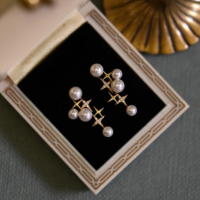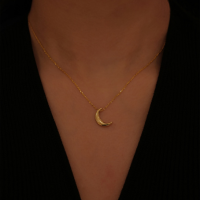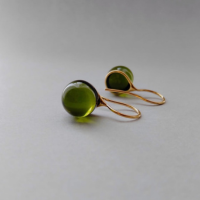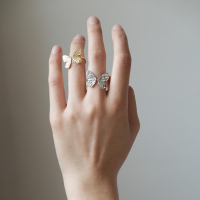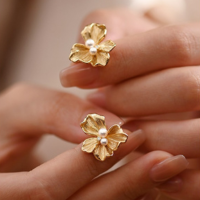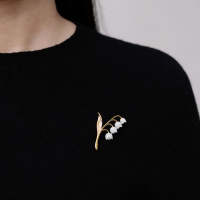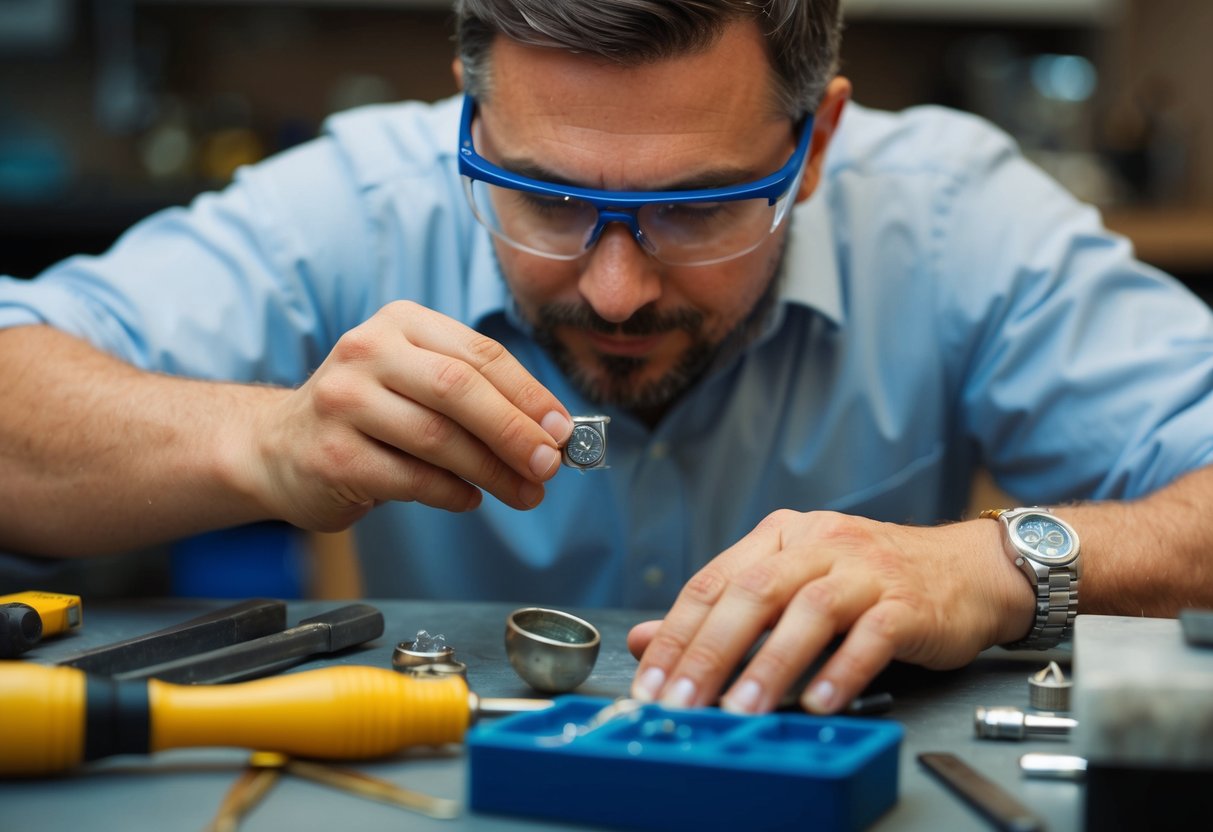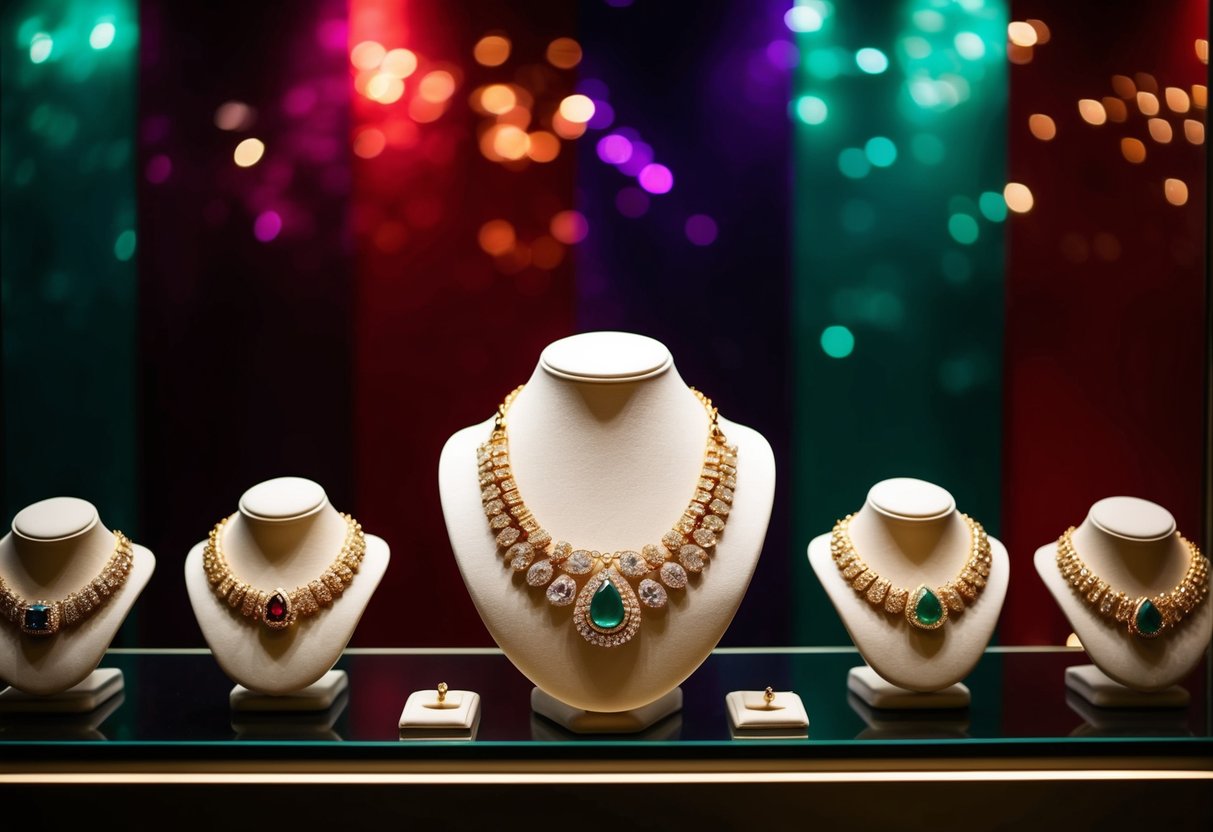
How to Clean Rhinestone Jewelry
Check out our personalized jewelry collections! (kids drawing jewelry, coin jewelry, wire jewelry, fingerprint jewelry, handwriting jewelry, and more)
Rhinestone jewelry adds a sparkling touch to our outfits. To keep these pieces looking their best, it's important to clean them gently and properly. Whether it's part of a costume from a special event or a family heirloom, knowing how to care for rhinestone jewelry ensures they dazzle every time we wear them.
Our guidance focuses on easy techniques and everyday solutions. We don't need harsh chemicals or complicated equipment to restore their shine. Simple household items can do the trick, making it accessible and straightforward for everyone.
By following a few essential steps, we can maintain our cherished rhinestones in pristine condition. From careful cleaning approaches to polishing tips, these methods are easy to incorporate into our regular care routine.
Key Takeaways
- Gentle cleaning keeps rhinestones bright.
- Simple supplies are effective for cleaning.
- Regular care extends the life of jewelry.
Understanding Rhinestone Jewelry
When we explore rhinestone jewelry, it's essential to know about the various types and materials. This will help us appreciate their beauty and quality.
Different Types of Rhinestones
Rhinestones come in several forms, each offering its unique sparkle. Glass rhinestones are the most common, known for their clear and consistent shine. They resemble real gems closely, making them a popular choice. Acrylic rhinestones have a lightweight feel and are often used in less expensive jewelry. These stones can come in a wide range of colors.
Swarovski rhinestones are another sought-after type, famous for their unmatched brilliance and precision cut. These crystals have a special coating, improving their reflective qualities. When choosing rhinestones, we consider these factors to find the best fit for our fashion needs.
Identifying Common Materials in Rhinestone Jewelry
Rhinestone jewelry is crafted using various materials. Metal settings hold the rhinestones in place. Some settings use plated metals like gold or silver to enhance appeal. It's important to check for any signs of tarnish, which can affect overall appearance and wearability.
Resin is another material found in rhinestone jewelry, particularly in casual pieces. Resin settings can offer a unique style and are typically more affordable. By identifying these materials, we can better care for and maintain our rhinestone jewelry, ensuring it stays looking beautiful.
Preparing for Cleaning
Before cleaning rhinestone jewelry, we need to gather the right supplies and carefully check the stones. This ensures a safe and effective cleaning process to preserve our jewelry's beauty.
Gathering Necessary Supplies
To clean rhinestone jewelry, it's crucial to have the right tools. We should gather a soft cloth, a bowl of warm water, and a mild dish soap. Avoid harsh chemicals because they can damage the stones or their settings.
A soft-bristled toothbrush can help gently remove dirt without scratching the surface. Cotton swabs or a soft brush are essential for reaching small crevices. Keeping these supplies ready ensures the cleaning process goes smoothly and our rhinestones remain sparkling.
Initial Inspection and Stone Security Check
Prior to cleaning, we must examine each piece. Look closely at the stones to check if any are loose. If a setting seems insecure, we should tighten it carefully or consider consulting a professional.
Check for visible dirt or grime, especially around the settings. Identify any permanent adhesive or residue, as these might require special attention. This detailed inspection helps us prevent damage while ensuring a thorough clean.
Cleaning Techniques
When we clean rhinestone jewelry, it's important to be gentle. Dusting, using a damp cloth, and soft brushing are effective methods. Each approach fits different levels of dirt or grime. Let's take a closer look at how to keep our precious pieces sparkling.
Gentle Dusting Method
We begin with a soft cloth or a can of compressed air. Dust can dull the brilliance of rhinestones, so we should remove it gently. Hold the piece carefully, and lightly wipe each rhinestone. Compressed air can blow away stubborn dust in those tricky spots.
It's crucial to avoid applying too much pressure. Rhinestones are typically glued, not set, so force can loosen them. The goal is to remove surface dust without disturbing the stones. This simple step should restore some of their shine.
For regular maintenance, dusting once a week should suffice. This helps in keeping our jewelry in tip-top shape and prevents dirt from settling in.
Damp Cloth Approach
For rhinestones needing more than dusting, we can use a damp cloth. The cloth should just be slightly damp, never wet. A microfiber cloth works best as it reduces lint and won’t scratch the stones.
We dab the cloth on the stones, careful not to soak the settings. Excess water can dissolve the glue holding the rhinestones. This approach helps with minor grime and keeps residues away.
Avoid using chemical cleaners or soap, as these can damage rhinestones. Gently wiping with just water helps maintain the jewelry's quality and sparkle.
Soft Brushing for Encrusted Dirt
Sometimes, dusting and wiping aren't enough for stubborn dirt. In such cases, a soft brush is handy. A clean, soft-bristled toothbrush can lift dirt without damaging the stones.
We gently move the brush in circular motions across each rhinestone. This technique helps dislodge dirt stuck in crevices without force. Again, avoid any harsh scrubbing.
After brushing, a quick wipe with a dry cloth will help bring back the shine. Regular brushing should keep our jewelry looking fresh without removing any rhinestones.
Special Considerations
When cleaning rhinestone jewelry, we need to pay attention to oxidation, tarnish, and proper care for foiled back rhinestones. Each type requires different methods to maintain sparkle and avoid damage.
Dealing with Oxidation and Tarnish
Rhinestone jewelry often uses metal settings which can oxidize or tarnish. It's crucial to use solutions that gently clean the metal without affecting the rhinestones. We can create a simple paste with baking soda and water for a mild effect. Apply the paste sparingly using a soft cloth and gently polish the metal parts. Avoid immersing the entire piece in liquid as this can damage glue settings. Always test a small area first to make sure there's no reaction.
Consistent maintenance helps prevent tarnish buildup, ensuring our rhinestones remain brilliant. Regular wiping with a soft, dry cloth keeps tarnish at bay. Be sure to store pieces in a cool, dry place and separately from other jewelry to avoid scratches.
Caring for Foiled Back Rhinestones
Rhinestones with foiled backs require extra caution. Foil backing can be sensitive to moisture and harsh chemicals, so we should never soak them. Instead, use a damp cloth to wipe them gently, staying clear of the edges to protect the foil. A soft brush can be effective for reaching tight spots. After cleaning, let them dry completely in air, avoiding heaters or direct sunlight.
It's also important to check the settings regularly. Loose stones risk damage to the foil. If we spot looseness, getting them promptly fixed by a professional can prevent further wear. Proper care ensures our rhinestone jewelry remains stunning for years to come.
Drying and Polishing
After washing rhinestone jewelry, it's crucial to dry and polish it correctly to keep its sparkle. Proper drying prevents water spots, and buffing adds an extra shine.
Proper Drying Techniques
Keeping our rhinestone jewelry dry is key. Begin by patting it gently with a soft, lint-free cloth. We should be careful not to rub the stones as this can loosen them. Using a gentle dabbing motion, soak up as much moisture as possible.
Next, place the jewelry on a dry cloth in a well-ventilated spot. This helps ensure any remaining moisture evaporates without leaving water spots. It's important to avoid direct sunlight, which can fade stones.
Lastly, if we notice any tight spaces or grooves, consider using a hairdryer on a cool setting. Keep the dryer at a safe distance to prevent any heat damage. This step can help ensure no moisture is trapped.
Buffing for Extra Shine
Once the jewelry is completely dry, we can focus on polishing to enhance its luster. Using a clean, microfiber cloth, gently buff the jewelry using small, circular motions. This helps remove any residue or fingerprints.
We should ensure our movements are steady and not too forceful. Applying too much pressure can cause scratches. For tighter areas and corners, a soft-bristle brush can help enhance the shine without damaging the setting.
Buffing brings out the sparkle and makes it look refreshed, allowing us to enjoy our rhinestone jewelry looking its best.
Regular Maintenance Tips
To keep rhinestone jewelry sparkling, knowing how to store it and how often to clean it is essential. These steps ensure lasting shine and prevent damage.
Storage Advice
Proper storage keeps our rhinestone jewelry in top shape. We should use soft pouches or individual compartments to prevent scratching. Rhinestones can get scratched easily if they rub against other pieces. Lined jewelry boxes work best as they cushion the pieces and protect the stones.
We should also avoid storing rhinestone jewelry in damp areas. Moisture can tarnish metals and dull the rhinestones. Placing a small packet of silica gel in the jewelry box helps absorb excess moisture. Finally, always fasten clasps and pins before storing to prevent tangles and breakage.
Routine Cleaning Frequency
Routine cleaning is crucial for rhinestone jewelry to maintain its brilliance. We should aim to clean our pieces every few weeks. Wiping them down with a soft, lint-free cloth removes oils and dust. Avoid harsh chemicals since they can damage the stones and the setting.
For a deeper clean, using a mixture of lukewarm water and mild soap works well. Gently scrubbing with a soft brush can remove dirt from hard-to-reach places. Never soak the jewelry as this can loosen the glue that holds the rhinestones. Dry the pieces thoroughly with a clean cloth before putting them away.
Troubleshooting Common Issues
When rhinestones lose their sparkle, it's usually due to dirt or oils. First, we should check for any residue on the stones. Use a soft brush to gently clean the surface and see if that helps. If the stones still look dull, they might need a more thorough cleaning with mild soap and warm water.
Cloudy stones are a common issue. Often, this happens when water or moisture gets trapped under the stone. We can try to carefully dry them using a hairdryer on a cool setting. If the cloudiness persists, the stones might be loose, and we'll need to inspect them closely.
Sometimes, rhinestones fall out. In this case, inspect the setting to ensure it's intact. If the prongs are bent or broken, we'll likely need professional help to repair them. For DIY fixes, a small amount of jewelry glue can help reattach stones, making sure we use it sparingly to avoid any overflow.
For tarnishing, this is usually due to reactions between metal and moisture or air. If the setting is tarnished, consider using a tarnish-removing solution specifically made for jewelry. We should always test it on a small, hidden area first to ensure it doesn't damage the piece.
Lastly, if our rhinestone jewelry has an unpleasant odor, it might be due to buildup of dirt and oils. Cleaning the jewelry gently again with mild soap and water often resolves this. Regular maintenance can help keep our pieces looking fresh and new.
Frequently Asked Questions
Cleaning rhinestone jewelry requires gentle care and the right methods to restore its shine. Using safe household items can help maintain its brilliance without damage.
What is the best method to restore the sparkle of my rhinestone earrings?
We should start by gently wiping the rhinestones with a soft, dry cloth to remove any dust or fingerprints. If they need deeper cleaning, a slightly damp cloth with mild soap can help. Always dry them thoroughly to prevent water damage.
Can I use vinegar to clean my rhinestone jewelry without causing damage?
Vinegar has strong acids that might harm the rhinestones, especially the metal settings. We recommend using a milder solution. Opt for a gentle soap mixed with warm water instead to ensure the jewelry stays intact.
What steps should I follow to properly clean tarnished costume jewelry?
First, wipe it with a soft cloth. To tackle tarnish, a mixture of baking soda and water can be used. Apply it gently with a cloth, then rinse and dry. Be careful around the rhinestones because excessive moisture can loosen the adhesive.
How can I safely remove yellowing from my rhinestones at home?
To address yellowing, use a soft toothbrush with mild soap and water. Lightly scrub the rhinestones, avoiding soaking them. Rinse with a damp cloth, and dry immediately to prevent further discoloration.
Is baking soda a safe option for cleaning rhinestone pieces?
While baking soda can be useful for some jewelry, it may be too abrasive for rhinestones. We suggest trying a mild soap solution instead, ensuring the rhinestones and their settings remain scratch-free.
Why have my rhinestones lost their luster and how can I prevent it?
Loss of luster is often due to dirt and oils. Regular maintenance with a soft, dry cloth can keep them shining. Store jewelry separately to avoid scratches. Keep them in a dry place to prevent damage from moisture.

